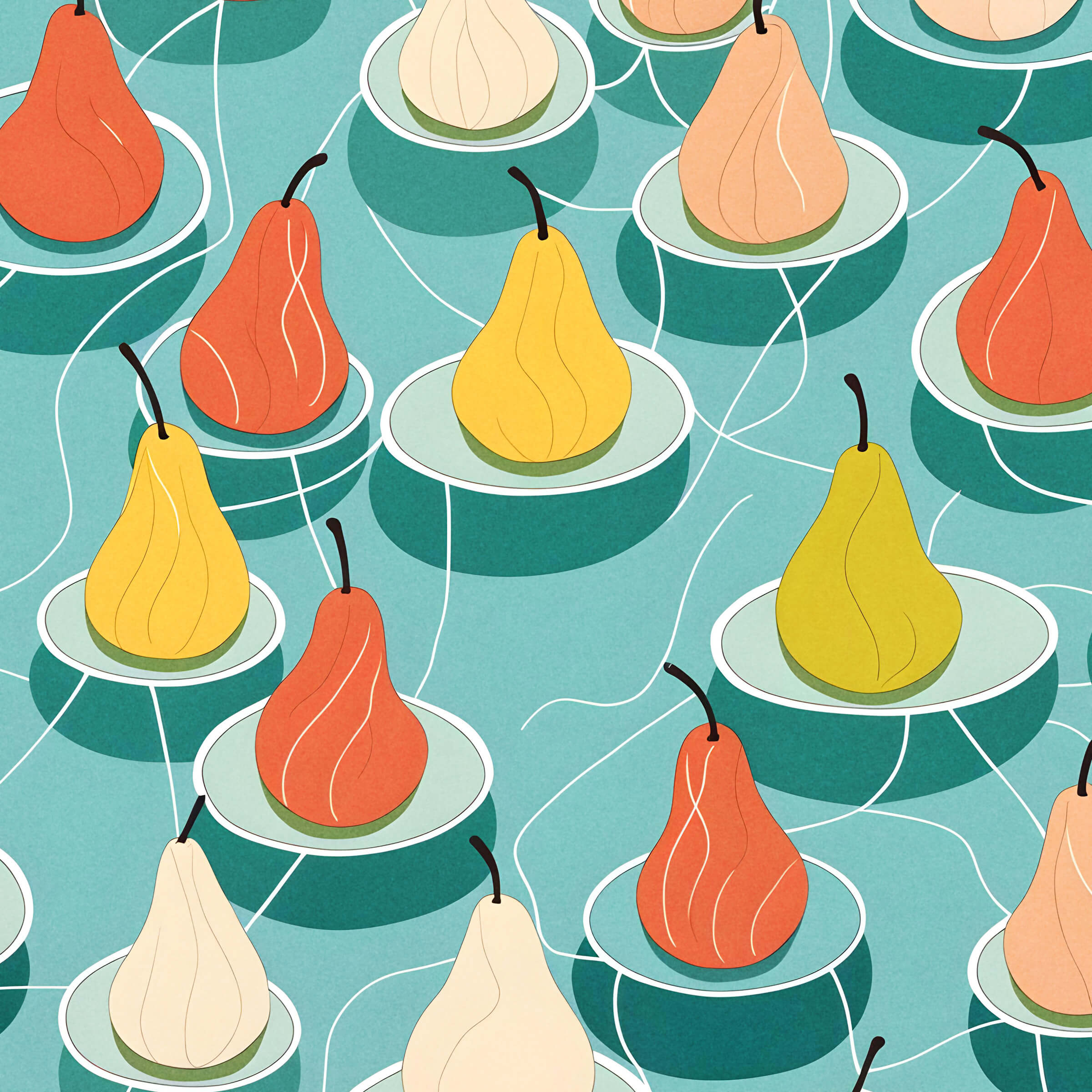
9 Juicy Fun Facts About Pears
The pear has been a beloved sweet treat for longer than most fruits. It has a rich history across many cultures spanning the globe. When the pilgrims came to North America in the 1600's, one of their first crops planted were pear trees.
Let's take nibble and learn more delectable fun facts about pears:
1. Pears have been enjoyed by humans for over a millennium.
With their cultivation dating back to 1100 years ago in China, the early cultivation of pears involved cultivating wild pears. These were selectively bred to create the many delicious varieties we have today.
2. The most expensive pear in the world is a Buddha-shaped pear.
This edible art is made by putting a mold over the young fruit so that it fills out to the proper shape by the time it is ready to harvest. These yummy statues are carefully nurtured by Chinese farmers and can sell for around $10 each, making them a luxury fruit for those who can afford them.
3. There are more than 3,000 different varieties of pears that grow throughout the world.
With the trees reaching up to 12 meters (40 feet) tall. These varieties come in a wide range of shapes, sizes, and flavors, from sweet and juicy to tart and crisp.
4. Pear leaves were commonly smoked.
Before tobacco became available in Europe (which happened after Christopher Columbus's 1492 voyage), pear leaves were the top choice for smokers. Pear leaves contain a mild stimulant that can have a relaxing effect when smoked. Although smoking pear leaves is not a popular pastime today, it is interesting to note the many unusual uses that humans have found for the humble pear.
5. While the pear is a deciduous tree that loses its leaves yearly, it is actually in the rose family (Rosaceae).
Pears, along with other fruit salad pals, like the apple are part of this botanical family. This means that the pear tree has many characteristics in common with other Rosaceae members, including delicate flowers and tasty fruits.
6. Pear wood is prized for several neat uses, including the making of woodwind instruments and other artistic carvings.
The wood is lightweight but strong and has a unique grain pattern. This makes it ideal for creating delicate works of art and musical instruments that are both beautiful and functional.
7. If you're looking for a great natural laxative, or just want to beef up your fiber intake, pears are a great choice.
They are packed with insoluble fiber, the kind that doesn't dissolve in water, and help "move things along" if you get our drift. Eating pears regularly can help keep your digestive system healthy and running smoothly.
8. Pears will ripen quickly when placed next to bananas.
Got an unripe pear? This is fairly common due to the farming practice of picking them before they are ripe. This allows more time to transport and sell the delicious devils. If you need a pear to ripen up quickly, place it next to a banana overnight. The ethylene gases released naturally by the banana will speed-ripen your pear, making it ready to eat in no time.
9. In Chinese culture, the pear (or "li") is a symbol of immortality.
The destruction of a pear tree is often seen as an omen for an untimely or tragic death. This association with immortality has led to the pear being a popular symbol in Chinese art and literature, and is just one of the many fascinating cultural connections that the pear has around the world.





